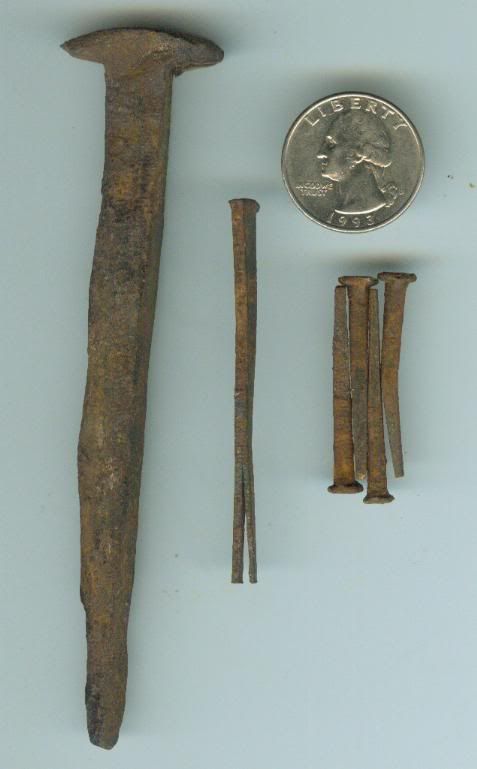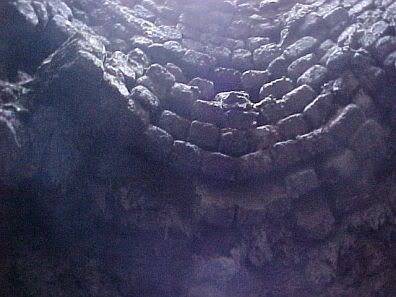NH, I've put a quarter beside the nail above for scale, thanks I wasn't thinking of that.
Ken, That is a great article thanks to you and Chris How.
I had never understood why those old cut nails split so often, I couldn't understand why they would be laminated or folded, they weren't. Page 8 contained the answer. The rolling of the plate caused differential cooling and set up a shear plane within the plate stock. The 8d nail in this shot is on its side and shows the split. The others were some neat old nails I had laid on a shelf in the barn.

The old furnaces here have captured my attention for some time. I don't claim to know much about them, but for those who know less here's what I've gleaned, always interested in more. These produced the pig iron that then went to the puddling furnaces mentioned in the article. We had those forges but I don't know of any remaining. There is a farmer near here who recovered the trip hammer from one out of the creek. That would have hammered the pig into bar stock.
This is what the furnaces did to smelt the ore; Iron appears in nature as an oxide, rust, FeO. If heated in the presence of carbon, the O combines with the C and is driven off through the stack as CO2 and CO. The relatively pure iron, Fe, drops through the floating molten slag that has been collected by the flux and collects in the hearth protected from the O in the air blast by the slag. It collected there until tapped out periodically.
The whistle blew, contractors manned their molds The clay plug was knocked out and the stream of iron flowed down the trench in front of the tapping arch. Or the furnace would simply mold pigs off the trench, or the furnace would mold pigs at the end after the end of the contractors molding. It was reminiscent of piglets nursing off the stream. Our furnaces made pots, pans, stoveplate, the salt kettles used in Saltville and pig iron.

I've crawled in through the tapping arch and am standing on the hearth. This is looking up past the collapsing firebrick in the bosh at the top of the stack from where the furnace was charged with skips of ore, charcoal and limestone. The bosh is the widest area of the furnace where the reaction occured. It is the wear area. The inside is coated with glassy slag. The air belt surrounded the outside of the furnace and admitted air pressurized by the stream outside. The air came in about waist level on each side directed into a horizontal swirl by kneewalls.

Kicking around outside I found what I think is an interesting chunk of clinker that I suspect was part of the charge just above the melt when the interior collapsed. I think we are looking at whitish limestone, yellowish limonite, black charcoal and red rust that was iron forming that has since returned to rust.
I think the Swedish ore mentioned in the article that was prized by the British was what they called "oldgrounds ore" from a town who's name sounded similar to that. I believe it was a much cleaner ore of magnetite or hematite compared to ours.
I googled the Ewbanks nail, I didn't know the name. This is a good article with photos that came up;
http://www.abp.unimelb.edu.au/staff/milesbl/pdf/19th-century-nail-technology.pdf